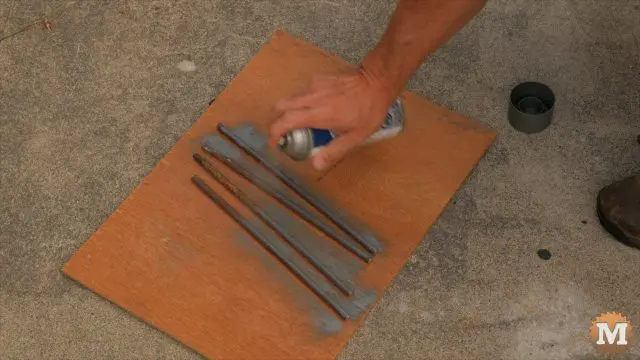pour CONCRETE
I’m using CAS mortar mix for these thinner forms. In North America, the Rapid Set brand can be found at Home Depot.
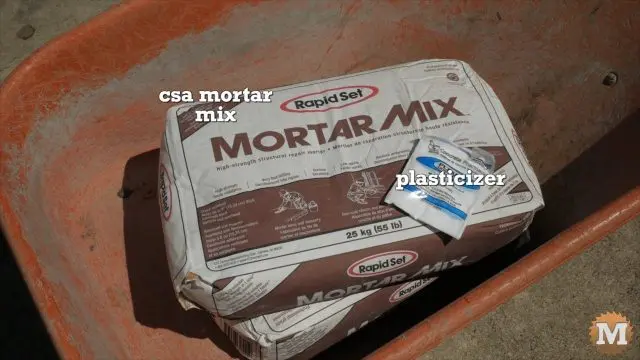
To make the concrete flow and pour like water I’ll be using a plasticizer. One small bag per batch. This mortar mix sets up very fast, so to give me more time, and to slow this down,
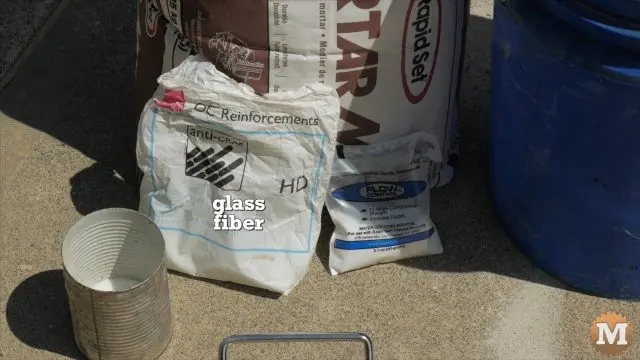
I’m going to add a small amount of Citric Acid powder. This powder can be found in most health food stores or a grocery store in the canning section. In addition I’ll add a third of an ounce of glass fibre. This is the manufacturers recommended amount.
Here’s the proportions for the mix: A 55 pound bag of CSA Mortar Mix, 5 quarts of water, a bag of plasticizer, and about 2 ounces of citric acid powder. These garden box plans were specifically designed for this type of concrete.
CSA Concrete Formula
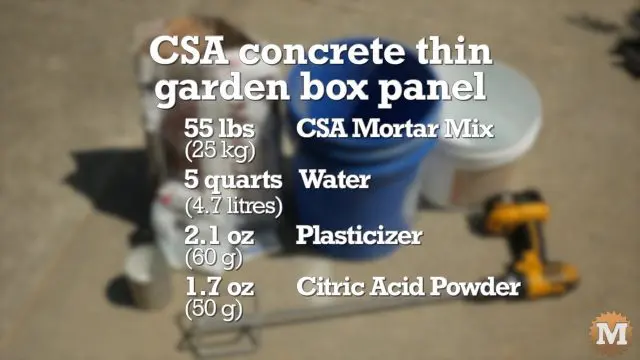
I add the water to my mixing pail and dissolve the citric acid powder. Then I add the plasticizer and dissolve it too. Then I add about a third of the bag of mortar mix and some glass fibre. I’ll blend this until smooth, adding more dry mortar mix slowly.
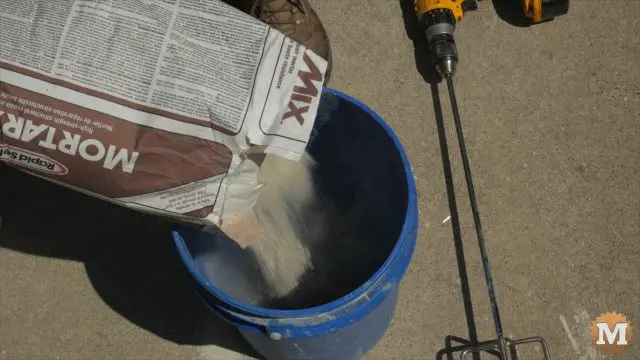
One batch will fill two 36″ forms or a 48″ and a 24″. I fill each form with the concrete mix. And vibrate the forms with a recip saw (without a blade) to bring any bubbles to the surface. When the concrete begins to thicken I lay in the galvanized wire grid and push it into the centre with a trowel.
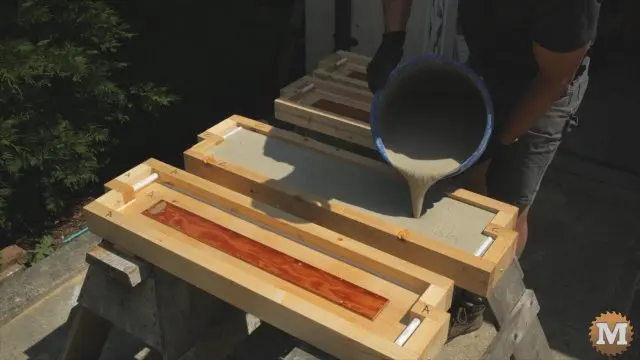
I mixed one final batch to fill the last 48 and 24 inch forms. Laying in wire grid as it solidifies.
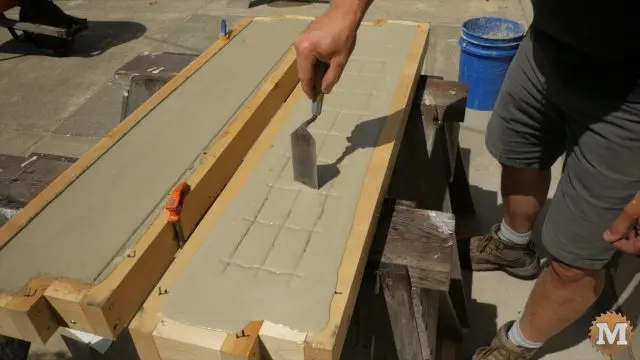
I wet the forms when the concrete hardens and begins to dry on the surface, and a white spotty haze forms. I do this water curing for about an hour.
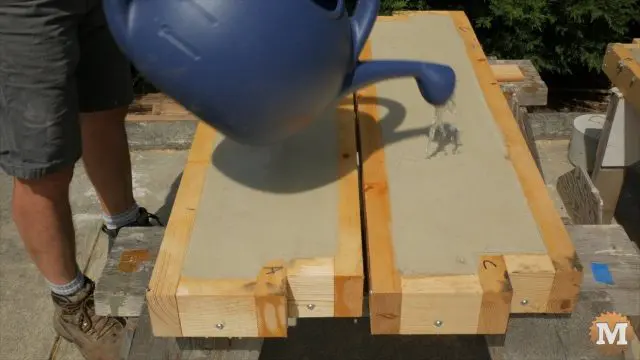
Strip the Forms
After an hour, the concrete can be removed from the forms.
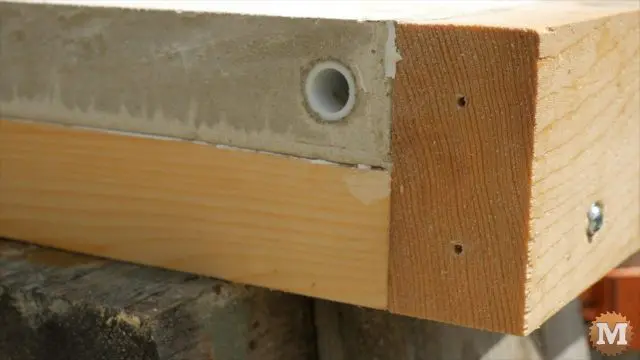
Now the screws can be removed and I can gently pull off the sides. And then each end. And I can free the panel from the base with a little help from a paint scraper. And here’s a 48″ panel coming out of the form.
(Disclaimer: As an Amazon Associate I earn from qualifying purchases. Thank you for helping to support my content this way. )
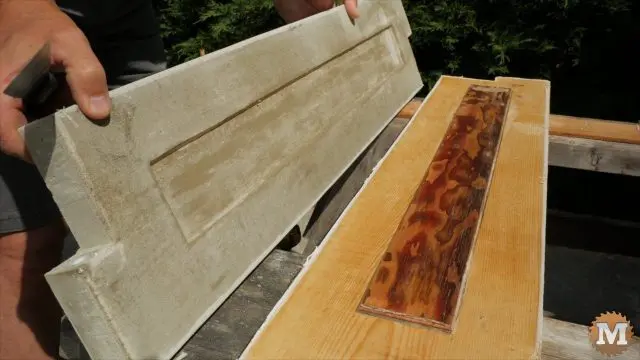
The newly cast panels should now be at half their full strength. They will reach near maximum strength in about 4 weeks if kept wet. The latex caulk can be easily scraped off with a putty knife and the form parts wiped clean with a rag. I was happy with these new garden box plans. The csa concrete is very smooth and casts very well.
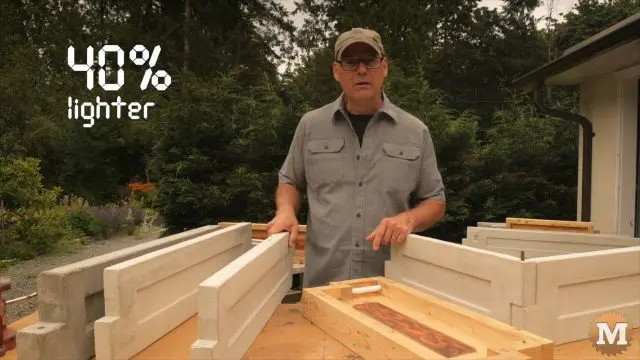
So I really like how these concrete panels came out of the forms. It’s the nicest concrete I think I’ve ever poured. The original portland based concrete forms are about 50 pounds for a 36″ panel. These new panels are only 30 pounds. So pretty significant savings in weight and concrete
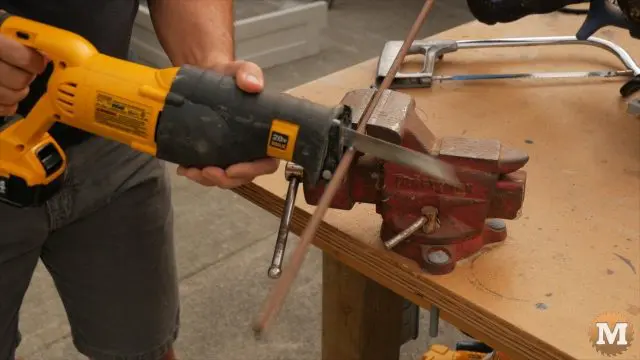
I cut electrical fence posts into one foot lengths with my reciprocating saw. A hacksaw or a cutoff blade in an angle grinder would work too. And I painted these bars with some rust paint.
